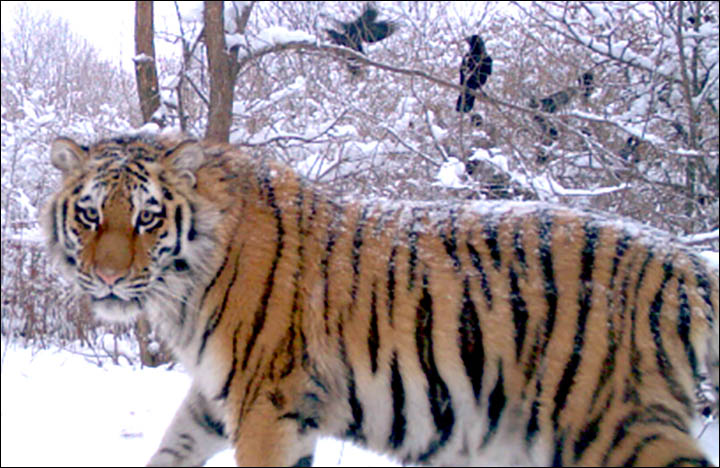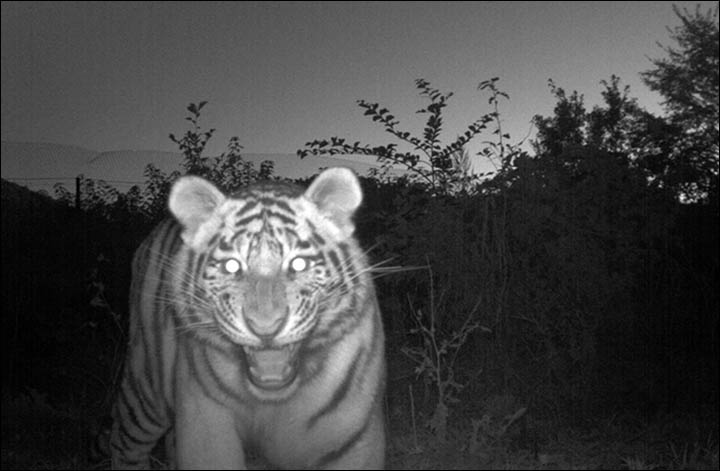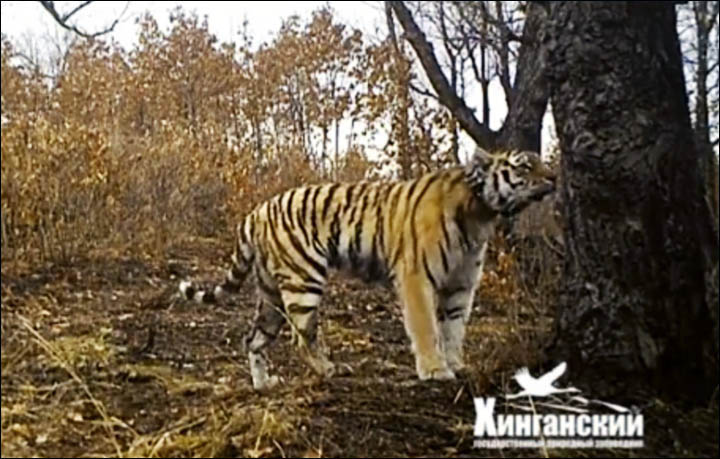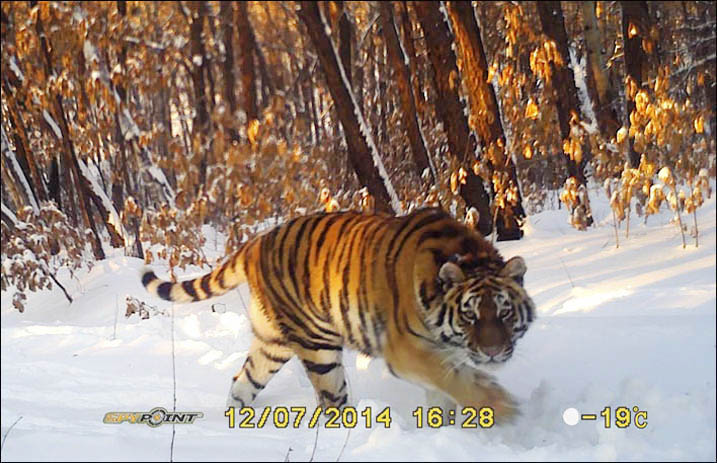28 October 2015
Kuzya and Ilona shake off their electronic tags, but all signs show they thrive in wild.

Siberian tiger is among the rarest big cats on the planet. Picture: Svetlana Sutyrina
The GPS collars have stopped bleeping on two of the tigers released
by President Vladimir Putin to roam free in Russia's nature. For some
six weeks, the Department for Wildlife Protection has not received
signals from the big cats. Is this a reason for alarm? After all, the
tigers are endangered. Among the rarest big cats on the planet.Kuzya 'lost' his collar first: the device simply stopped transmitting signals. Despite this, the tiger was traced by wildlife cameras on a grand tour of the Russian Far East, and effortlessly crossing frontiers.


Kuzya was traced by wildlife cameras on a grand tour of the Russian Far East, and effortless crossing frontiers. Pictures: 'Tiger' special inspection
The tiger's journey took him through Primorsky region, into neighbouring Khabarovsk, before pawing it to China where he appeared on photo trap cameras, pausing only to become the star of an Australian documentary. Soon he was back in Russia, in the Jewish Autonomous Region.
And even if Ilona's tag is not working, the evidence suggests she is now safe in the Khingansky Reserve. Or so it seems from photo traps, her footprints, and marks on trees, old-style monitoring. Environmental official Nikolay Stepanov said only the third tiger, Borya, was in constant e-contact with his watchers.



Even if Ilona's tag is not working, the evidence suggests she is now safe in the Khingansky Reserve. Pictures: Khingansky Reserve
'The president released them in Amur region in order to restore their population,' he said. 'The number of predators has considerably dropped. Today there are about 500 (Amur tigers) left in the Far East. It is expected that Ilona, Kuzya and Borya will breed - but they haven't yet had any cubs.'
Two of them, at least, may get the chance to do what nature intended without being spied on. Borya has now also gone to the Jewish Autonomous Region. The three tigers were released by President Putin in Arkharinsky district in May 2014.
The Kremlin leader has spearheaded the campaign to save the endangered species from extinction.
source
No comments:
Post a Comment